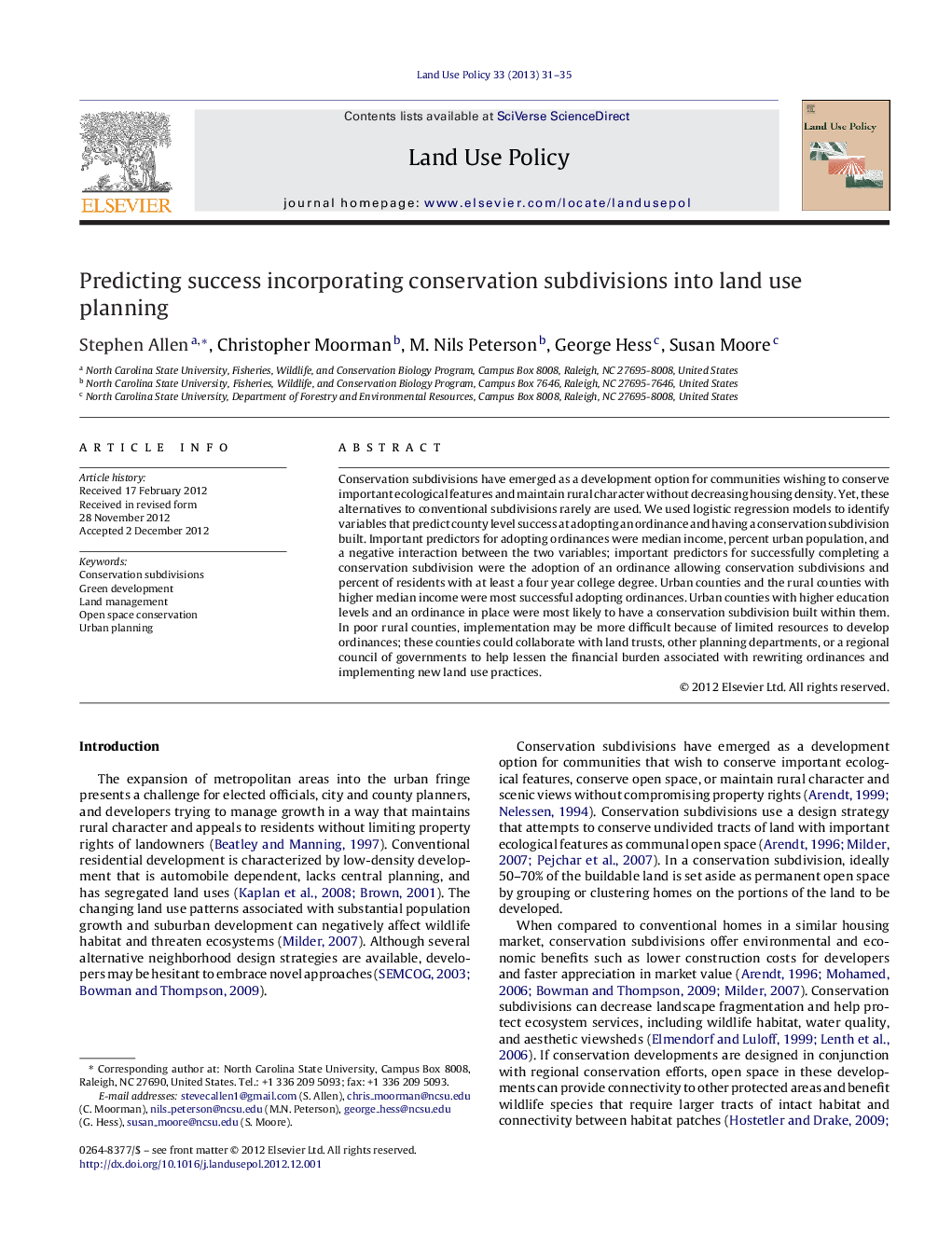| Article ID | Journal | Published Year | Pages | File Type |
|---|---|---|---|---|
| 93127 | Land Use Policy | 2013 | 5 Pages |
Conservation subdivisions have emerged as a development option for communities wishing to conserve important ecological features and maintain rural character without decreasing housing density. Yet, these alternatives to conventional subdivisions rarely are used. We used logistic regression models to identify variables that predict county level success at adopting an ordinance and having a conservation subdivision built. Important predictors for adopting ordinances were median income, percent urban population, and a negative interaction between the two variables; important predictors for successfully completing a conservation subdivision were the adoption of an ordinance allowing conservation subdivisions and percent of residents with at least a four year college degree. Urban counties and the rural counties with higher median income were most successful adopting ordinances. Urban counties with higher education levels and an ordinance in place were most likely to have a conservation subdivision built within them. In poor rural counties, implementation may be more difficult because of limited resources to develop ordinances; these counties could collaborate with land trusts, other planning departments, or a regional council of governments to help lessen the financial burden associated with rewriting ordinances and implementing new land use practices.
► Logistic regression used to identify variables that predict success. ► Median income and percent urban population predicted success adopting ordinance. ► Predictors for completing a conservation subdivision were having an ordinance and education level. ► Urban counties with high education rate and a conservation subdivision ordinance were most likely to implement. ► In poor rural counties, implementation may be more difficult.
